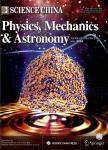Computational simulation of wave propagation problems in infinite domains
Computational simulation of wave propagation problems in infinite domains作者机构:Computational Geosciences Research CentreCentral South UniversityChangsha 410083China CSIRO Division of Exploration and MiningP.O.Box 1130BentleyWA 6102Australia
出 版 物:《Science China(Physics,Mechanics & Astronomy)》 (中国科学:物理学、力学、天文学(英文版))
年 卷 期:2010年第53卷第8期
页 面:1397-1407页
核心收录:
学科分类:07[理学] 070201[理学-理论物理] 0702[理学-物理学]
主 题:wave absorbing boundary dynamic infinite element wave propagation infinite domain computational simulation
摘 要:This paper deals with the computational simulation of both scalar wave and vector wave propagation problems in infinite domains. Due to its advantages in simulating complicated geometry and complex material properties, the finite element method is used to simulate the near field of a wave propagation problem involving an infinite domain. To avoid wave reflection and refraction at the common boundary between the near field and the far field of an infinite domain, we have to use some special treatments to this boundary. For a wave radiation problem, a wave absorbing boundary can be applied to the common boundary between the near field and the far field of an infinite domain, while for a wave scattering problem, the dynamic infinite element can be used to propagate the incident wave from the near field to the far field of the infinite domain. For the sake of illustrating how these two different approaches are used to simulate the effect of the far field, a mathematical expression for a wave absorbing boundary of high-order accuracy is derived from a two-dimensional scalar wave radiation problem in an infinite domain, while the detailed mathematical formulation of the dynamic infinite element is derived from a two-dimensional vector wave scattering problem in an infinite domain. Finally, the coupled method of finite elements and dynamic infinite elements is used to investigate the effects of topographical conditions on the free field motion along the surface of a canyon.



